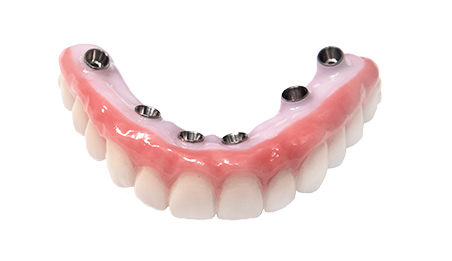Dental Sense for Beginners
Table of ContentsUnknown Facts About Dental SenseThe Greatest Guide To Dental Sense9 Easy Facts About Dental Sense ShownMore About Dental Sense
are clinical tools surgically dental implanted right into the jaw to recover an individual's capability to chew or their look. They offer support for synthetic (fake) teeth, such as crowns, bridges, or dentures. When a tooth is lost as a result of injury or disease, an individual can experience difficulties such as rapid bone loss, faulty speech, or adjustments to chewing patterns that cause discomfort.Oral implant systems consist of a dental implant body and dental implant joint and may likewise include a joint fixation screw. Wisdom tooth cavity. The oral implant body is surgically put in the jawbone instead of the tooth's root. The dental implant joint is normally connected to the implant body by the joint addiction screw and extends with gums right into the mouth to support the affixed fabricated teeth
(https://matthewmusic33101.wixsite.com/dental-sense/post/dental-veneers-cost-kids-dental-and-dental-implant-vs-bridge-what-you-need-to-know)Framework of The Oral Implant System selecting dental implants, talk to your dental provider about the prospective advantages and risks, and whether you are a prospect for the treatment. Things to take into consideration: Your total health and wellness is a vital consider identifying whether you are a good candidate for oral implants, the length of time it will take to recover, and exactly how long the implant may remain in location.
Cigarette smoking might impact the recovery procedure and decrease the long-term success of the dental implant. The healing procedure for the implant body may take numerous months or longer, throughout which time you typically have a short-term abutment in area of the tooth. the dental implant treatment: Meticulously follow the oral hygiene guidelines offered to you by your dental company.
How Dental Sense can Save You Time, Stress, and Money.
Implant failure can cause the requirement for another procedure to fix or replace the implant system. Brings back the ability to chew Brings back cosmetic look Helps maintain the jawbone from reducing as a result of bone loss Maintains the wellness of the surrounding bone and gum tissues Aids keep nearby (nearby) teeth stable Enhances high quality of life Damage to surrounding all-natural teeth during dental implant positioning Injury to the surrounding tissues throughout surgical treatment, such as sinus perforation Injury throughout surgical procedure (for instance, fracture of surrounding jawbone) Inadequate feature, such as really feeling like the teeth do not bite with each other usually A feeling that the tooth hangs or turning in position arising from an abutment screw loosening Implant body failure (looseness of the implant body) because of systemic infection, which may be extra most likely in people with unchecked diabetes as a result of neighborhood infection in bone and periodontals sustaining the dental implant body because of delayed healing, which might be much more most likely in patients who smoke Trouble cleaning the gums around the dental implant, resulting in bad oral hygiene Without treatment periodontal condition Post-surgical tingling due to nerve impingement or damages Constantly alert healthcare providers and imaging service technicians that you have oral implants before any type of magnetic resonance imaging (MRI) or x-ray treatments.
FDA is not familiar with any damaging occasions reported for MRI or x-ray treatments with oral implants. Oral implants systems are normally made of products that adhere to worldwide agreement standards of the International Organization for Standardization (ISO) or ASTM International. These criteria have information of what makes a secure product.

An oral implant is a framework that changes a missing out on tooth. With screw-like gadgets, the surgeon inserts an implant right into the jawbone, and it acts as an anchor for an artificial tooth, called a crown. A device called an abutment connects the man-made tooth to the oral implant. The crown is customized to fit the person's mouth and match the color of their teeth.
Dental Sense for Dummies
Some individuals are not eligible for oral implant surgery. It is for oral doctors to operate people with: acute illnessuncontrollable metabolic diseasebone or soft cells illness or infectionIf these issues are fixed, a person can have the surgical procedure. In, oral doctors abstain from running on individuals with: If individuals with any one of the above undergo dental implant surgical treatment, there is a higher threat of the implant failing.

Dental dental implant surgery is a personalized process. Offer you time to recover. Affix the article and last crown, bridge or denture.
Next off, your specialist will carefully position the dental implant into your jaw. Ultimately, your doctor will rearrange your periodontals and shut the laceration with stitches. If your implant is near the front of your mouth, your dentist will make a momentary tooth for you to use up until you heal. This way, you won't have a space in your smile while you recoup.
A Biased View of Dental Sense
Your provider can tell you what to expect this content in your circumstance. During the healing stage, your jawbone ought to fuse to the oral implant. This process, called osseointegration, is critical for stability and long-lasting success. This procedure can take anywhere from three to 9 months. In many cases, it might take longer.
As soon as your implant heals, your dental professional can attach the joint (small port article) and your last reconstruction (crown, bridge or denture). This typically takes regarding one hour to finish and might need a second minor surgical procedure. You shouldn't feel any pain throughout your dental implant treatment due to the fact that your copyright will certainly utilize medication to numb your gum tissues.